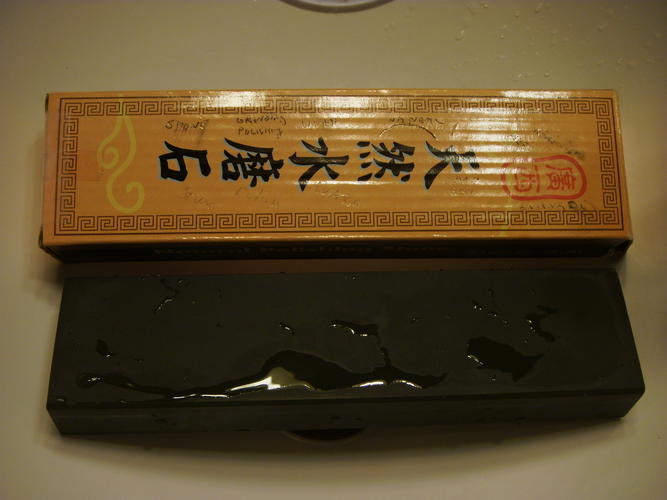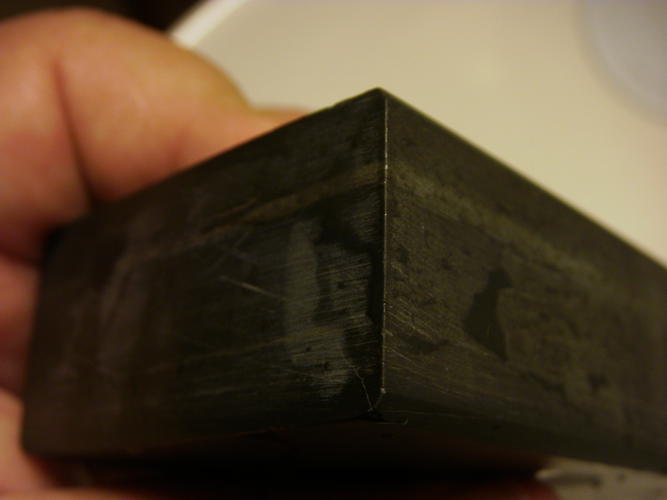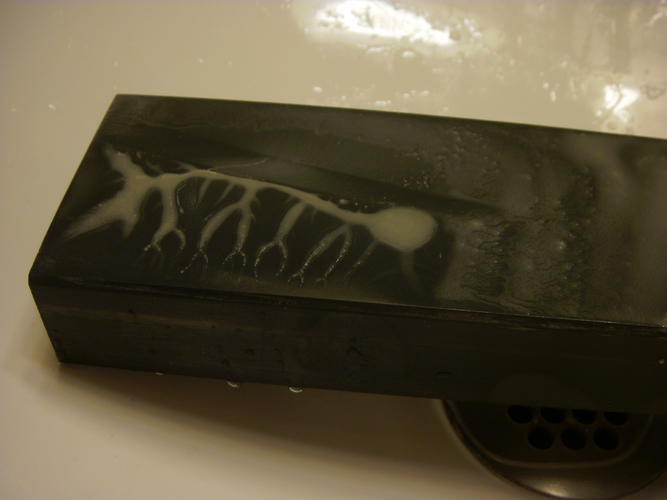Results 1 to 9 of 9
-
11-04-2015, 01:49 PM #1Senior Member

- Join Date
- Jan 2015
- Location
- mountainside North Alabama
- Posts
- 129
Thanked: 14 CNat from Woodcraft - slate or basalt ?
CNat from Woodcraft - slate or basalt ?
I've seen a few statements here and there that the Guangxi stone is basalt, an igneous rock.
This is surprising, I was thinking it was a metamorphic slate.
Just curious as always and hoping a geologist will clarify...
-
11-04-2015, 02:30 PM #2illegitimum non carborundum



- Join Date
- Jan 2008
- Location
- Rochester, MN
- Posts
- 11,552
- Blog Entries
- 1
Thanked: 3795
Honestly, I never thought to give it a thought, but they sure are a bargain!
In my complete geological ignorance, I agree with you that it seems more like a slate.
-
11-04-2015, 03:38 PM #3

Basalt and Slate couldn't be more different as are their properties. Slate is metamorphosed shale which is sedimentary and Basalt is igneous, a dark iron rich rock from deep in the earth and very common. I've never seen the hone in question so I couldn't tell you anything about it.
No matter how many men you kill you can't kill your successor-Emperor Nero
-
11-04-2015, 05:43 PM #4Senior Member


- Join Date
- Jul 2011
- Posts
- 2,110
Thanked: 459
Here's a curve to throw in, that I don't think will solve anything. Chinese Blue Stone, which looks very similar (especially in polished format blocks) is described by the sellers to be blue limestone.
I don't know chemically what's in the blue stones, but if someone analyzed one, that would tell us pretty quickly what it actually is.
Limestone is softer than the silica that's normally in natural sharpening stones, though, so I don't know if blue limestone is an improper name, or if it is something similar with some silica or natural alumina in it.
And I know nothing about geology, so aside from reading things and trying to associate them with something I've already used...no clue.
The origin of those chinese stones might be woodwell tools because they show them with the characteristic box that woodcraft has (and woodwell tools are sold by woodcraft and their sister catalogs like japan woodworker). Anyway, point being, woodwell doesn't say anything about what they actually are.
I think someone will have to analyze one before we know what it is.
-
11-04-2015, 06:23 PM #5At this point in time...




- Join Date
- Jun 2007
- Location
- North Idaho Redoubt
- Posts
- 27,046
- Blog Entries
- 1
Thanked: 13249
I always assumed they were a Slate or maybe even a Schist
-
11-04-2015, 06:57 PM #6Senior Member

- Join Date
- Jan 2015
- Location
- mountainside North Alabama
- Posts
- 129
Thanked: 14
Perhaps I should have stated in the OP why I am asking. Currently on *bay there is a "Washington Basalt Razor Finishing Hone" where the vendor makes the comment that it is the same type stone as our much discussed Woodcraft.
As this statement struck me as odd, I did a quick search of this forum and found at least one other instance of it being referred to as basalt in the
http://straightrazorpalace.com/hones...se-hone-3.html
I must admit I am skeptical; I picked up a Woodcraft a couple weeks ago (I intend to review and put pics) that has what appears to be a separation boundary line as if between sediment layers. I don't know if this can happen with igneous, but maybe it can.
Looking at the surface of my purple Welsh slate at 60X, a scrape with a pointy object results in a huge pile of white sand against the dark background. These are the quartz particles being freed from the binding matrix. Scraping the Woodcraft CNAT results in exactly the same thing (although mine is harder than the Welsh). The CNAT also smells 'slaty' when wet like my purple Welsh.Last edited by KenG; 11-04-2015 at 07:01 PM.
-
11-05-2015, 01:46 PM #7Senior Member


- Join Date
- Jul 2011
- Posts
- 2,110
Thanked: 459
I would've guessed slate before this discussion came up, but I'm not even sure all of the hones sold as "chinese hones" are the same stones, they just seem similar. The ones with the stretch mark looking things on them from woodcraft seem different than some of the types floating around that slurry freely.
-
11-11-2015, 08:51 PM #8Senior Member

- Join Date
- Jan 2015
- Location
- mountainside North Alabama
- Posts
- 129
Thanked: 14



I got the smaller one feels better in the hand to me. Chinese lady at work said the characters on box mean "natural water grinding stone." Guanxi means "west province."
I tried to show the layer separation boundary line that is nice and even all the way around. The slurry is creamy white with maybe the slightest hint of the stone color. The stone has an almost greasy quality.
I can do a better review after I've done a few more razors on it. I like it so far.
-
11-11-2015, 10:11 PM #9

You wouldn't have sedimentary layers and igneous unless you had a volcanic eruption and it covered the sedimentary layers which does happen but that is on a really grand scale not like you have there.
Limestone would not contain any silica or alumina in amounts great enough to affect honing. You can have trace minerals that coat and mix the limestone which is what gives cave formations the colors you see but nothing consequential mixed into the rock.
Blue Limestone is not uncommon. Areas of Ireland produce the stuff and areas in the U.S in the Mississippi Valley where lead is produced have it too. As to what colors it? Maybe Phosphates.No matter how many men you kill you can't kill your successor-Emperor Nero


 4Likes
4Likes
 LinkBack URL
LinkBack URL About LinkBacks
About LinkBacks






 Reply With Quote
Reply With Quote